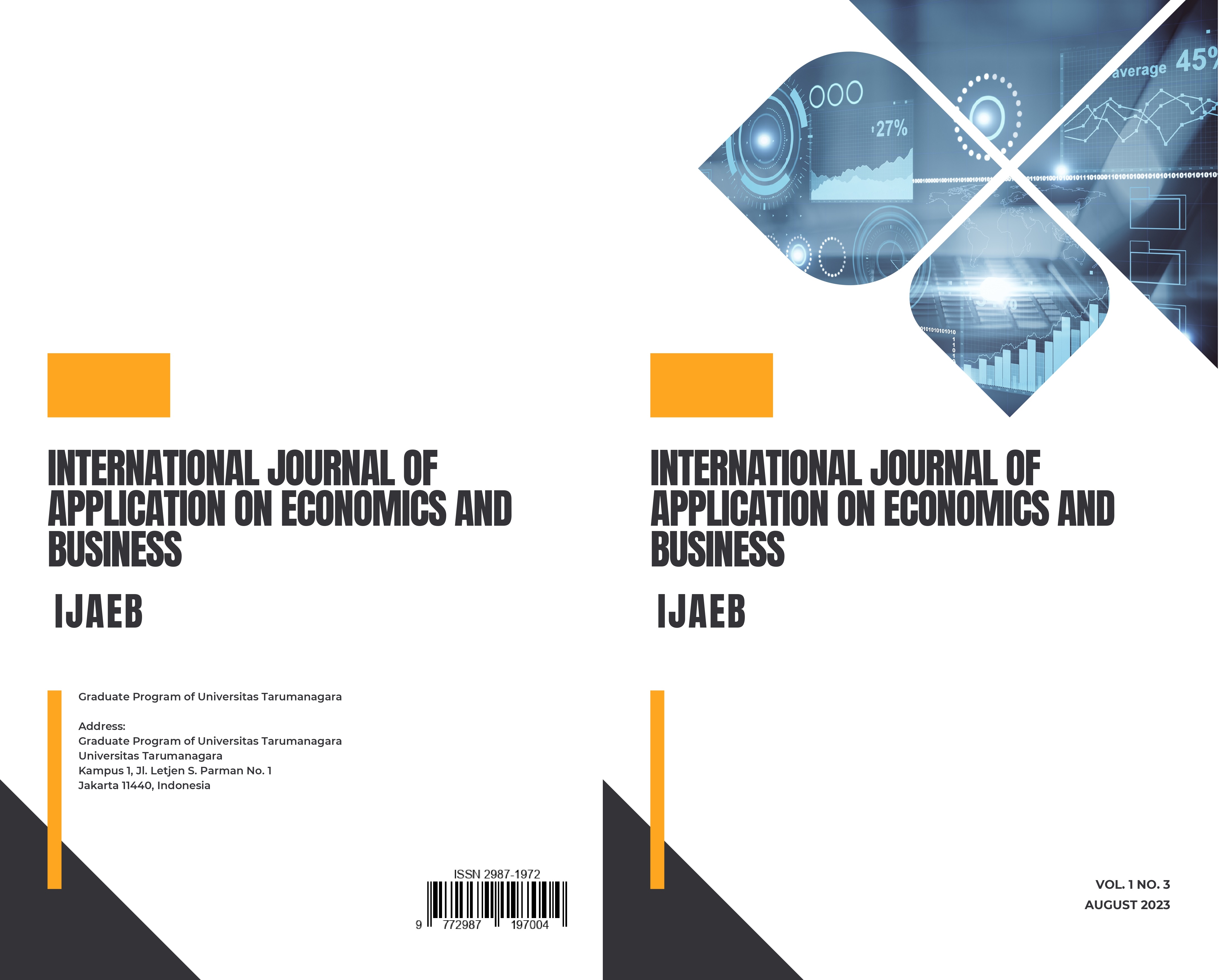INFLATION VALUE FORECASTING POST COVID-19 IN DENPASAR USING ARIMA
Main Article Content
Abstract
Forecasting is used to predict something that will happen in the future so that appropriate actions can be taken. ARIMA is a time series forecasting method that was developed where the observation data in a time series data interact. Inflation instability in Denpasar City in the future will make it difficult for the central bank and the government to determine policy. The Covid-19 pandemic has an impact on the value of inflation in Denpasar City. The purpose of this study is to estimate inflation in Denpasar City after Covid using the best ARIMA model. Inflation data was taken from BPS Denpasar City from January 2020 to August 2022. ARIMA analysis was carried out according to the Box-Jenkins procedure, namely searching the data, estimating parameters and significance tests, and determining the best ARIMA model. The results of the analysis show that the best ARIMA model is ARIMA (0,1,1). The results of this study indicate that monthly inflation in Denpasar City is likely to continue to increase. Based on these results, it is hoped that appropriate policies will be made to reduce inflation.
Article Details

This work is licensed under a Creative Commons Attribution-NonCommercial-ShareAlike 4.0 International License.
This journal provides immediate open access to its content on the principle that making research freely available to the public supports a greater global exchange of knowledge.
IJAEB by Graduate Program of Universitas Tarumanagara is licensed under a Creative Commons Attribution-NonCommercial-ShareAlike 4.0 International License.. Permissions beyond the scope of this license may be available at https://journal.untar.ac.id/index.php/ijaeb
References
Badan Pusat Statistik, Berita Resmi Statistik: Perkembangan Indeks Harga Konsumen / Inflasi, 2020.
N. G. Mankiw, Principles of Economics (8th Edition). Cengage Learning, 2018.
Habarier, G., Inflation, Its Cause and Cures, America Enterprise Association, 1960.
D. Yuniarti, D. Rosadi, and Abdurakhman, Inflation of Indonesia during the COVID-19 pandemic, Journal of Physics: Conference Series, 2021, 1821(1). DOI: https://doi.org/ 10.1088/1742-6596/1821/1/012039.
A. Wahyuni, Prediksi Nilai Inflasi Post Covid 19 di Indonesia, Indonesian Journal of Islamic Economics and Finance, 2022, 2(1), pp; 57-65, DOI: https://doi.org/10.37680/ ijief.v2i1.1606 .
W. R. Salam, Inflasi di Tengah Pandemi dalam Perspektif Islam, Jurnal Syntax Tranformation, 2020, 1(5), pp.1–9, DOI: https://doi.org/10.46799/jst.v1i5.72 .
A. Priyadi, A.A.Susamto, and H. Purwoto, Dampak COVID-19 Terhadap Tingkat Inflasi Indonesia, 2021, Thesis: Universitas Gadjah Mada, http://etd.repository.ugm.ac.id/ penelitian/detail/203233.
Hartati, Penggunaan Metode Arima dalam Meramal Pergerakan Inflasi, Jurnal Matematika Sains dan Teknologi, 2017, 18(1), https://doi.org/10.33830/jmst.v18i1. 163.2017 .
A. Almosova, N. Andresen, Nonlinear Inflation Forecasting with Recurrent Neural Networks., Ecb.Europa.Eu, 2019, https://www.ecb.europa.eu/pub/conferences/shared/ pdf/20190923_inflation_conference/L2_Almosova.pdf .
T. Nyoni, Modeling and forecasting inflation in Burundi using ARIMA models, Munich Personal RePEc Archive, 2019, from: https://core.ac.uk/download/pdf/214011504.pdf .
S.R.P. Astutik, Sukestiyarno, P.Hendikawati, Peramalan Inflasi di Demak Menggunakan Metode ARIMA Berbantuan Software R dan MINITAB. PRISMA, Prosiding Seminar Nasional Matematika, 2018, pp745-754, https://journal.unnes.ac.id/sju/index.php/prisma/ article/view/20356 .
G. E. P., Box and J. Jenkins, Time Series Analysis, Forecasting, and Control, 1970.
I. Ghozali, Ekonometrika: Teori, konsep dan aplikasi dengan SPSS 17. Semarang: Badan Penerbit Universitas Diponegoro, 2009.



